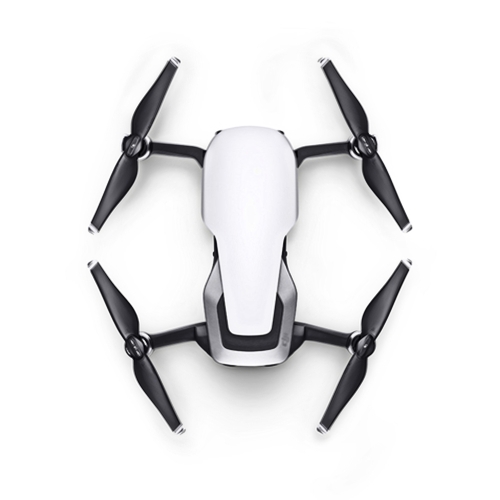Introduction to Drone Flying
The use of drones has become increasingly popular in the past couple of years and drones are finally starting to make their way into the mainstream. For anyone looking to get into drone flying and become a successful drone pilot, there are several important tips and techniques to consider. This beginner’s guide will provide you with a comprehensive overview of the steps you should take to become a successful drone pilot, from understanding the rules and regulations to maintaining your drone and planning for long-range flights.
Understand Drone Safety Protocol
One of the most important parts of becoming a successful drone pilot is understanding the safety protocols for flying drones. Knowing the dos and don’ts of flying a drone is essential for avoiding any unnecessary accidents or collisions. As a general rule, you should always fly your drone within your line of sight, only fly within daylight hours and use the no-fly zones of your area as directed. Additionally, it is important to make sure that any airspace you are flying in is not closed off or prohibited to ensure that you don’t put yourself or anyone else in danger.
Familiarize Yourself With Drone Technology
Drones come in a variety of shapes and sizes, so it is important to familiarize yourself with the technology used in a drone before you purchase one. There are several components to look into, including the type of motor, the type of battery and the type of control system you will use. Additionally, you should also consider how far the drone can fly, what type of sensors it contains and how it handles wind gusts. Familiarizing yourself with the technology used in a drone is essential for ensuring that you are using the right drone for the job.
Learn Rules and Regulations
In order to become a successful drone pilot, it is important to understand the various rules and regulations governing drone flying. These regulations can change from country to country, so it is important to understand the laws that apply in your area. Additionally, you should also be aware of the FAA drone regulations regarding airspace restrictions and other important factors. Learning the rules and regulations for drone flying is essential for avoiding any legal implications and keeping yourself and others safe.
Begin With Line of Sight Flying
One of the best ways to get started as a drone pilot is by mastering line of sight flying. This means that you always have eyes on the drone and are able to properly orient it while making sure that it doesn’t get too far away or get lost. This is an important skill as it will enable you to get a feel for the various maneuvers and flight paths that you will eventually take with your drone. Additionally, line of sight flying is also important for staying within the legal limits when flying a drone.
Practice Flight Paths and Maneuvers
In order to become a successful drone pilot, you should practice different flight paths and maneuvers with your drone. This will help you become familiar with how your drone operates and how to adjust the controls in order to make the most out of your flying experience. Additionally, it is important to practice emergency maneuvers so that you are able to make safe landings in the event of an emergency.
Advance Your Skills With FPV
Once you are comfortable flying your drone, it is time to advance your skills and begin flying with FPV (first-person view). This will enable you to get a more immersive experience and see what the drone is seeing in real time. Additionally, flying with FPV will allow you to make more accurate turns, advanced maneuvers and capture unique perspectives.
Maintain Your Drone
In order to become a successful drone pilot, it is important to maintain your drone on a regular basis. This includes regularly inspecting your drone, replacing parts as necessary and making sure that everything is properly calibrated before each flight. Additionally, it is important to keep your drone in good condition in order to ensure that it doesn’t malfunction and cause any unsafe conditions for you or anyone else.
Be Aware of Weather Changes
Weather can have a significant impact on your drone’s performance and safety, so it is important to be aware of any potential weather changes before flying. This includes checking the temperature, wind speed and direction, precipitation levels, cloud cover and the presence of any other potential hazardous weather conditions. Additionally, if you fly in extreme or adverse weather conditions, you should make sure that your drone is properly equipped and prepared for the conditions.
Utilize Apps for Navigation
In order to become a successful drone pilot, it is important to understand how to properly navigate with a drone. There are several apps and services available that can help you plan your flight paths, track the drone and even help you find the best landing spots. Additionally, some apps also offer safety features, such as altitude limiters and proximity alerts, which can help keep your drone from entering prohibited airspace.
Plan for Long-Range Flying
If you are looking to become a professional drone pilot, it is important to be able to plan for long-range flights. This means that you should be able to plan out takeoff points, flight paths and landing points in advance. Additionally, you should also be aware of the legal implications of flying long-range, as it can involve entering regulated airspace or airspace of another country.
Aim For Professional Drone Pilot Status
Becoming a professional drone pilot takes dedication and skill. In order to become a professional drone pilot, it is important to understand the various laws and regulations governing drone flying and to have a good understanding of the technology used in a drone and the various maneuvers that you can perform with it. Additionally, you should have experience in planning for long-range flights and navigating using various apps. Once you have acquired all of these skills, it is time to aim for professional status.
In conclusion, becoming a successful drone pilot takes practice, dedication, and skill. It is important to understand the safety protocols for flying drones and familiarize yourself with the technology and rules and regulations governing the use of drones. Additionally, it is important to practice different flight paths and maneuvers and advance your skills with FPV. Finally, you should maintain your drone, be aware of any weather changes, utilize navigation apps and plan for long-range flights in order to become a professional drone pilot.









































